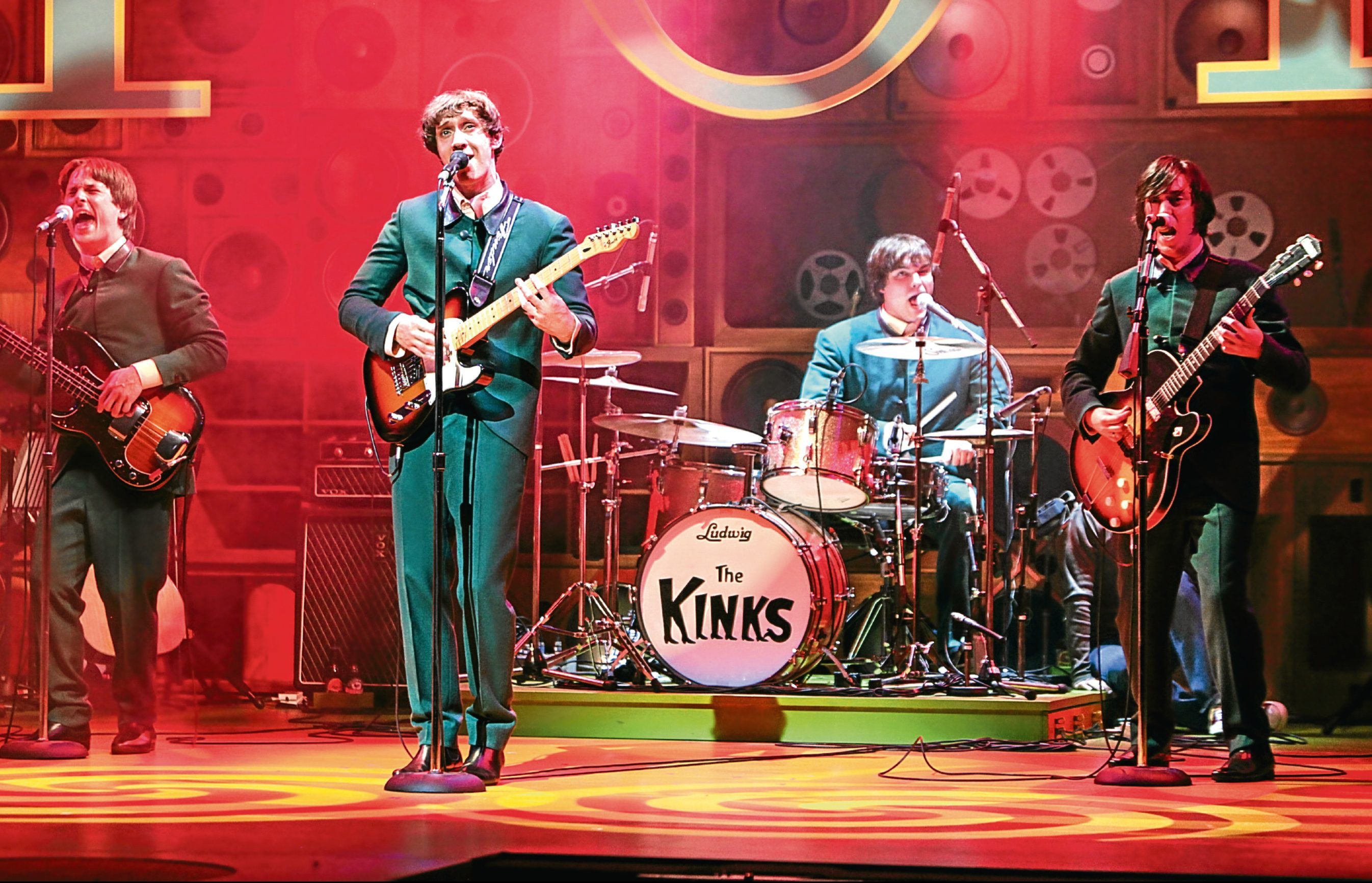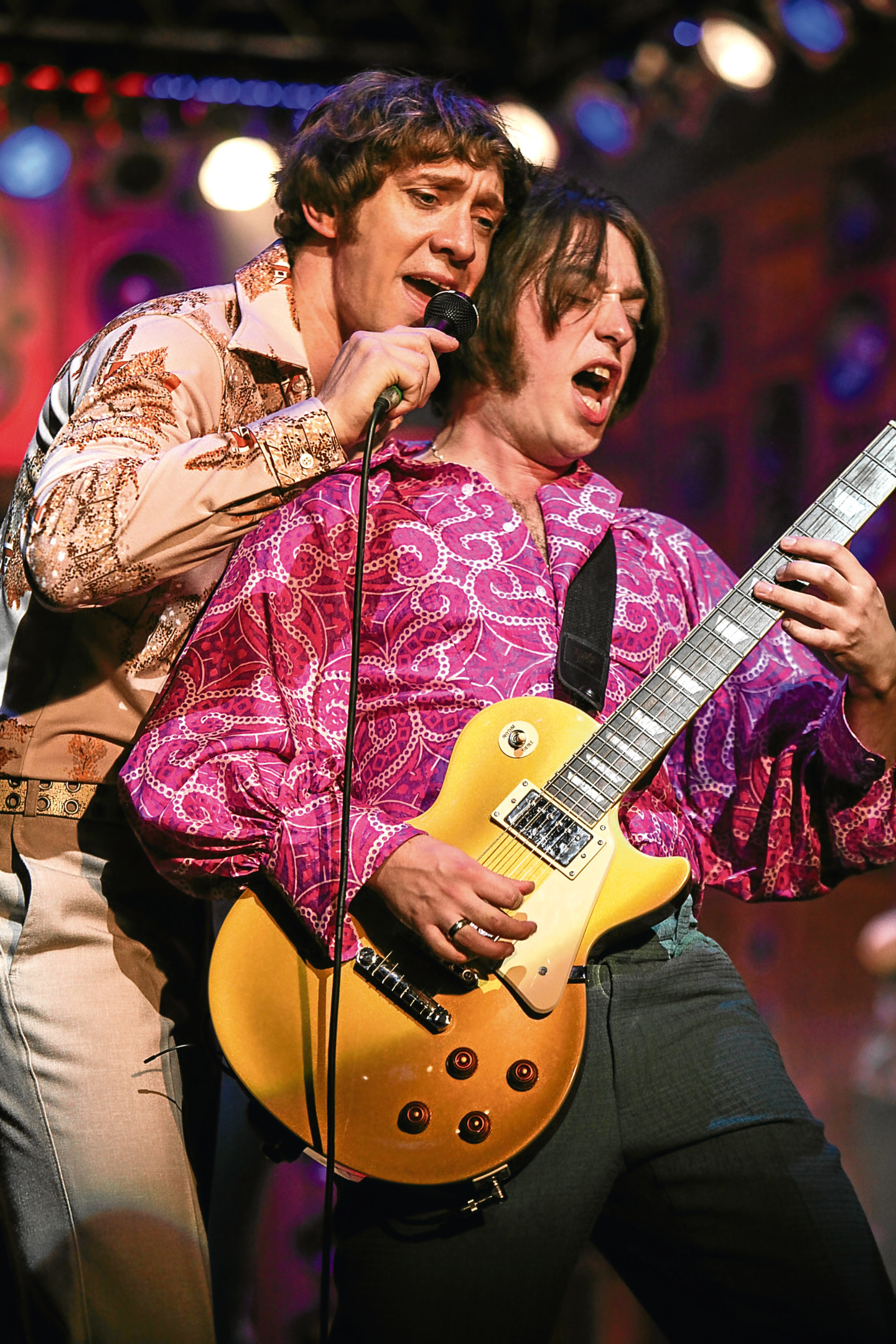
THE Kinks were massively successful for more than three decades.
The band from London’s Muswell Hill enjoyed their first No 1 hit with You Really Got Me in 1964 and finally called it a day in 1996 after 17 Top 20 singles.
And Sunny Afternoon, the stage musical that tells The Kinks’ story through their own music, has been a huge hit as well.
At last year’s Olivier Awards, the British theatre equivalent of the Oscars, it waltzed off with no fewer than four wins, including Best New Musical.
“There are 27 songs in the show and you can really see and hear The Kinks evolving over that period,” says Mark Newnham, who plays the band’s guitarist Dave Davies.
“If you take You Really Got Me and Waterloo Sunset, they’re two chalk-and-cheese songs, it sounds like a completely-different band playing them as we’re playing in different styles.”
Andrew Gallo, who portrays drummer Mick Avory, adds: “Sunny Afternoon chronicles The Kinks from 1963-64 when they were first starting out up to 1968-69, when Lola and Waterloo Sunset came out, that classic period.
“And it’s nice that the story leads you into these songs, like You Really Got Me is at the beginning when there’s loads of energy and youthfulness to things, whereas later on it’s a little bit more melancholy and pensive — the songs mature as the band matures.”
It’s well known Dave and his brother Ray, The Kinks’ singer and songwriter, had a tempestuous relationship, with incidents such as the time Ray allegedly stabbed Dave with a fork for stealing one of his chips.
Their feuding finally finished the band and though they briefly made up when Ray cared for Dave after he suffered a severe stroke in 2004, they quickly became estranged again.
Dave admitted: “I can’t stand to be with him. About an hour with Ray’s my limit. I think he’s only been happy for three years of his life, and those were the three years before I was born.”
So, is this tension the motor that drives the show?
“It’s the motor of The Kinks,” says Ryan O’Donnell, who plays the older sibling.
“Their frenetic energy was what made them successful and the fact they did bounce off each other so much is what made them create this amazing music.”
As Mark adds: “Yeah, there are some great moments with me and Ryan. There’s a big blow-out scene at the end between the two brothers doing a duelling duet.
“They wore their emotions on their sleeves — especially Dave who’s such a flamboyant character, he’s a joy to play.
“But you read Dave’s book and he’s got a very-different opinion to what you read in Ray’s — you never know what the real situation was.”
While the acrimony between the Davies brothers is well known, it was actually drummer Mick who went for Dave first. Didn’t he throw a cymbal at him?
“It was a bass-drum pedal,” corrects Andrew. “As Mick himself said: ‘People say it was a cymbal, but I would have decapitated him if that had been the case!’
“Dave was flamboyant and out there, doing crazy stuff, and Mick didn’t like that all the time, it was just a bit too much. He just wanted to play the songs and Dave would never let that happen, so it just got to a point where Mick went: ‘No, had enough!’.”
The turbulent relations between band members added to the pressure of touring, writing songs, marital problems, and being the main man in The Kinks saw Ray suffer a nervous breakdown in 1965.
He also collapsed in 1973 after a drug overdose when his wife left him, and was diagnosed with bipolar disorder.
Says Ryan: “Especially when they went to America, Ray felt this pressure to look after everyone. I’m told Ray needed to have close people around him all the time.
“He liked a close network of people and he wanted to take care of them and that’s why when things started crumbling in America, he started to crumble because he wasn’t in control of looking after everybody.”
With a reunion looking unlikely, the idea of a Kinks musical was born, as Mark says: “I think it’s been an idea at the back of Ray’s head for quite some time and now it’s come to fruition.
“Ray had quite a bit of influence on the show.
“We’ve met him, he was always there during the last round of auditions which was absolutely terrifying.
“He’s a nice bloke and I’ve had lots of conversations about guitars with him!”
Sunny Afternoon is touring until May. For more information visit the website www.sunnyafternoonthemusical.com
READ MORE
10 quick questions for Michael Ball
Offbeat record label is guitar slinger Jack White’s greatest legacy

Enjoy the convenience of having The Sunday Post delivered as a digital ePaper straight to your smartphone, tablet or computer.
Subscribe for only £5.49 a month and enjoy all the benefits of the printed paper as a digital replica.
Subscribe